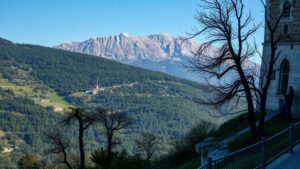Searching for remnants of the fabled “Seven Cities of Gold” in the American Southwest.
The Quest for the Seven Cities of Gold
The legend of the Seven Cities of Gold, known as Cibola, has captivated explorers, historians, and treasure hunters alike since the 16th century. Rooted in the conquests of Spanish explorers, this mythical account combines ambition, greed, and the eternal human allure of wealth. While several expeditions have sought to uncover these fabled cities in the American Southwest, each journey adds another layer to the complex tapestry of myth and reality surrounding Cibola.
The Origin of the Myth
The myth of the Seven Cities of Gold dates back to 1539 when explorer Fray Marcos de Niza reported seeing the cities during his expedition. His exaggerated claims, which he attributed to the accounts of Indigenous peoples, spurred further exploration. This influx of interest was rooted in a broader ambition of the Spanish Crown to explore and exploit riches in the New World.
The Historical Context
In 1540, the legendary tale prompted the aggressive expedition led by Francisco Vázquez de Coronado, who believed that Cibola was located in modern-day New Mexico. Despite extensive searching, Coronado and his men failed to find the cities of gold, ultimately discovering that the riches were a figment of imagination, largely based on the inflated tales from indigenous communities.
- Fray Marcos de Niza set forth in 1539.
- Coronados expedition took place in 1540.
Investigating Colonial Legends
Modern-Day Expeditions
Throughout the centuries, tales of Cibola have led numerous quests into the dry lands of the American Southwest. In recent years, archaeology and advancements in technology have allowed for more systematic searches, often focusing on regions in New Mexico. For example, in the 20th century, archaeological excavations at sites like Zuni Pueblo revealed a complex society with rich cultural artifacts, offering clues but not definitive evidence of the fabled cities.
Technological Advances in Exploration
Modern archaeologists now employ various techniques such as remote sensing, satellite imagery, and ground-penetrating radar, significantly aiding in the search for the rumored cities. In a noteworthy example, the use of aerial surveys has unveiled ancient settlements that predate European contact, suggesting that stories of rich civilizations existed long before the arrival of the Spaniards.
- Remote sensing technologies enhance archaeological research.
- Aerial surveys have revealed previously unknown sites.
The Cultural Impact of the Legend
The search for the Seven Cities of Gold has transcended historical context, becoming a vital part of American cultural heritage. story has inspired literature, film, and even contemporary folklore, often intertwined with themes of adventure and exploration.
Influence on Literature and Pop Culture
Countless books and movies have drawn inspiration from the narrative, shaping public perception of the American Southwest. For example, the book Seven Cities of Gold by David Roberts recounts historical explorations while interweaving personal adventure with factual accounts.
Indigenous Perspectives
Its essential to recognize that while the Spanish narrative focused on treasures, Indigenous peoples had rich, complex societies long before contact. Some Indigenous tribes view the legends of Cibola as a cautionary tale about the consequences of greed and the disruption caused by colonization.
Lessons Learned and Action Steps
While the quest for the Seven Cities of Gold may not yield material riches, the journey offers valuable lessons about ambition, cultural interaction, and historical legacy. Here are actionable takeaways for those inspired by this enduring legend:
- Explore historical sites responsibly, understanding their cultural significance.
- Engage with Indigenous narratives to gain broader insights into the myth.
- Support ongoing archaeological efforts to preserve historical contexts.
To wrap up, the fabled Seven Cities of Gold continues to serve as a symbol of humanitys quest for knowledge and discovery. As modern technologies and theories evolve, the stories surrounding Cibola will remain integral to understanding the rich history and culture of the American Southwest.



